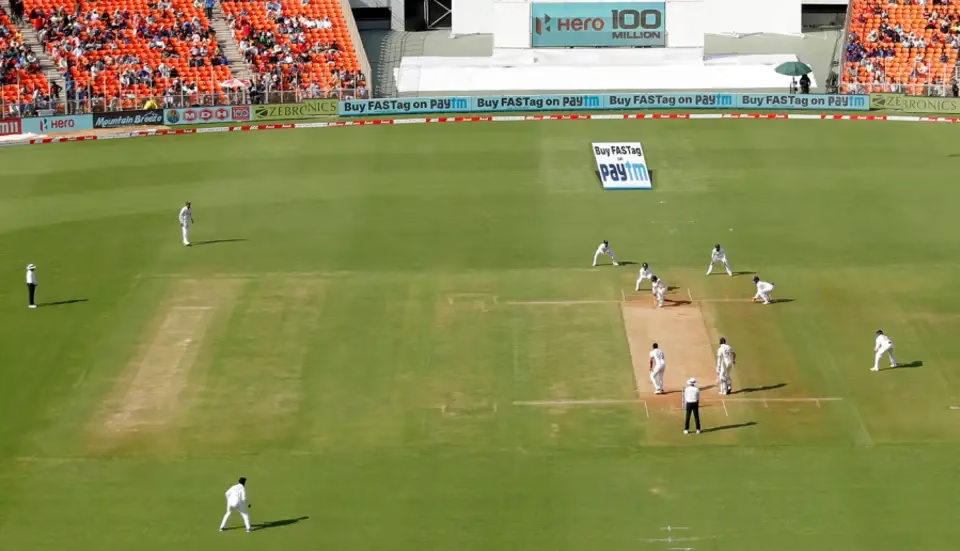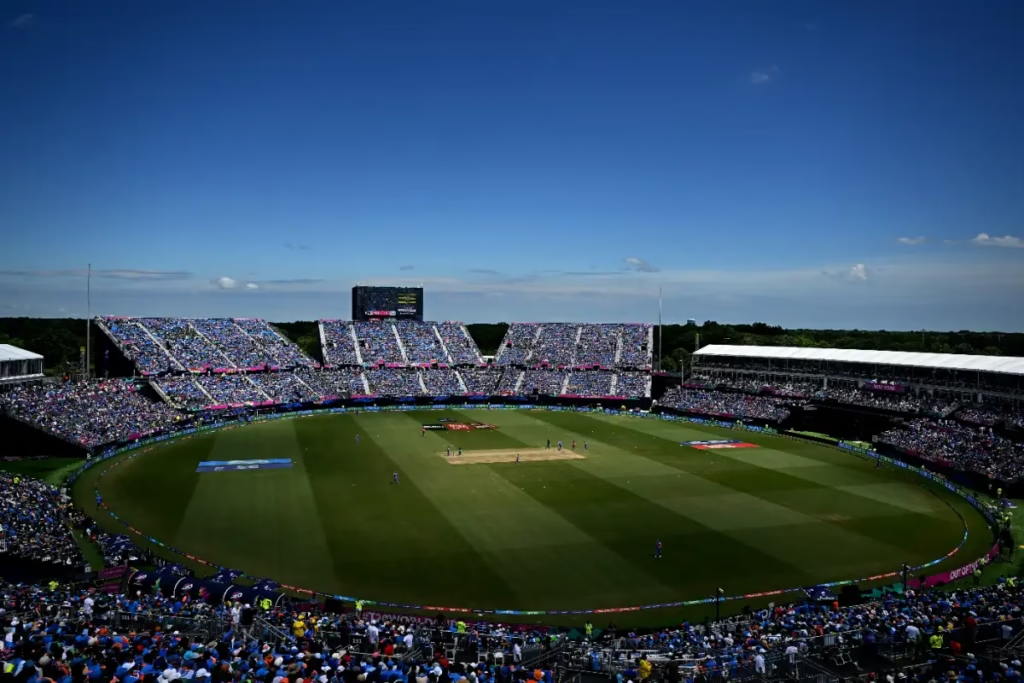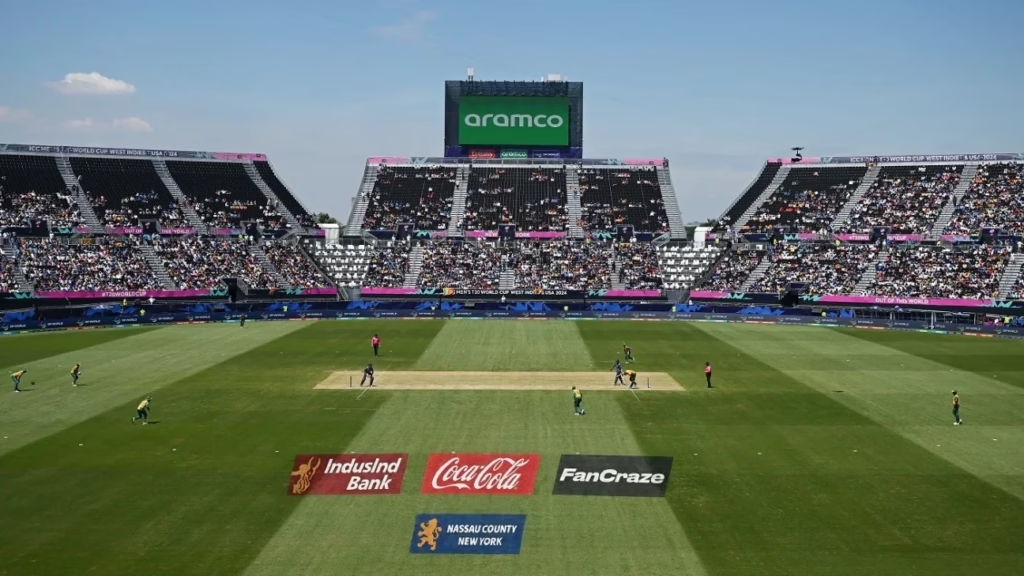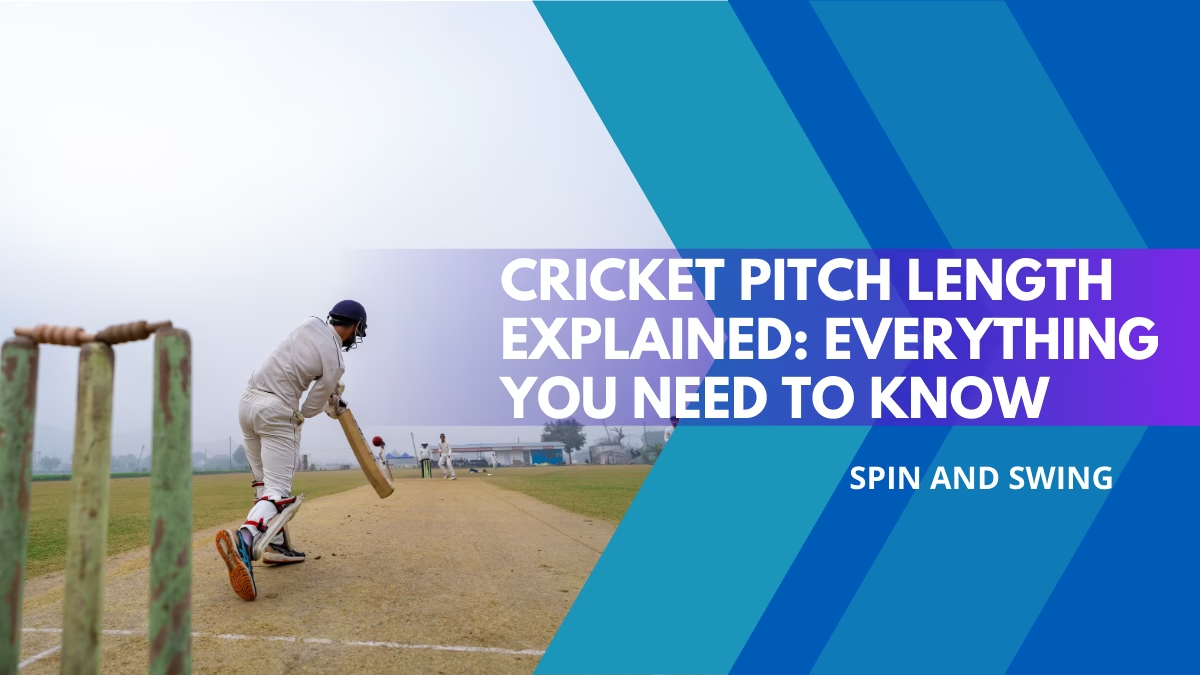When we talk about cricket, we often focus on powerful shots, swing bowling, or thrilling finishes. But one part of the game quietly plays a big role in every match—the cricket pitch. Understanding the cricket pitch length, its size, and how it impacts the game can help fans, players, and even coaches better appreciate how it unfolds.
This article explains the length of a cricket pitch, its dimensions, and why the cricket pitch measurement matters so much—especially in high-pressure matches like a Cricket World Cup final pitch.
What Is a Cricket Pitch?

A cricket pitch is the main part of the field where most of the game occurs. It’s the area between the two wickets where the bowler bowls the ball and the batter tries to score runs. The pitch is usually flat and firm, and it can be made of natural grass or artificial material, depending on where and what level the game is being played.
What Is the Standard Cricket Pitch Length?
Let’s get straight to the point—how long is a cricket pitch?
The standard length of a cricket pitch is:
- 22 yards
- 66 feet
- 20.12 meters
This measurement is taken from one set of stumps to the other. It doesn’t change whether you’re playing in a local match or the Cricket World Cup final. The pitch length remains the same across all formats—test, ODI, and T20.
So, if you’re wondering what is the length of a cricket pitch in feet, the answer is 66 feet.
Cricket Pitch Dimensions You Should Know
Apart from the length of a cricket pitch, the pitch also has specific width and markings that play a crucial role in the game:
- Width of the pitch: 10 feet (3.05 meters)
- Bowling crease: This is the line behind the stumps where the bowler releases the ball. It is located 4 feet (1.22 meters) from the stumps.
- Popping crease: Located 4 feet in front of the stumps, this line is important for judging no-balls and run-outs.
- Return creases: These lines are drawn perpendicular to the popping crease and mark the area where the bowler must stay during delivery.
When we talk about cricket pitch size, we refer to this entire rectangular area with all its markings.
Why Does Cricket Pitch Length Matter?

The cricket pitch length may look like a fixed number on paper, but it affects the game in many ways:
1. Bowling Strategies
Fast bowlers use the full length to gain momentum and bounce. Spin bowlers use the pitch’s grip and turn. Even small changes in the surface can affect how the ball behaves after pitching.
2. Batting Approach
A batter has just a second to react to a ball. Knowing the pitch length helps with footwork and shot timing. If a pitch is dry or cracked, it might cause unpredictable bounce—making batting harder.
3. Decision Making
During a Cricket World Cup final pitch or other big games, team selectors and captains closely examine the pitch. Is it dry or green? Will it support swing or spin? These decisions are often based on understanding pitch behavior, not just the surface but also how the cricket pitch dimensions affect ball travel.
Cricket Pitch Length in Different Units
Some people are used to feet, others to meters or yards. Let’s look at all the common units used to answer how long is a cricket pitch:
| Measurement Type | Length |
| Yards | 22 yards |
| Feet | 66 feet |
| Meters | 20.12 meters |
So, a cricket pitch length in feet is 66 feet, while a cricket pitch length in meter is 20.12 meters. The numbers stay the same worldwide, ensuring consistency.
Turf Pitch vs Artificial Pitch: Does the Length Change?
No, the cricket pitch length remains the same regardless of the surface. But the pitch type can influence bounce and spin.
- Natural turf pitches are used in professional matches and vary based on climate and ground care.
- Artificial pitches are often used in practice sessions or trainee matches. They offer a consistent bounce and less maintenance.
Even with different surfaces, the cricket pitch measurement doesn’t change.
Are There Any Rule Changes in Pitch Length?

There have been no changes to the cricket pitch length at the international level. However, junior cricket sometimes uses shorter pitches to match the skills of young players.
For example:
- Under-11 players often play on a 16 or 18-yard pitch.
- As the age group increases, the pitch size gradually moves to 22 yards.
This allows younger players to develop better timing and technique without struggling with the full-length pitch early on.
Common Misunderstandings
Let’s clear up a few things people often get wrong:
- The boundary length is not the same as the cricket pitch size.
- Crease lines are part of the pitching setup, but don’t extend the cricket pitch length.
- Weather doesn’t change pitch length but affects how the ball behaves.
Final Thoughts
Understanding the cricket pitch length isn’t just for umpires or groundsmen. For players, it influences their game plans. And in big matches, it can even play a role in deciding the outcome and making history.
To sum it up:
- Cricket pitch length in feet: 66 feet
- Cricket pitch length in meter: 20.12 meters
- Standard measurement across all formats and levels
- Influences pace, bounce, and strategy
- Same for turf and artificial surfaces
So the next time someone asks, “What is the length of a cricket pitch?” You’ve got the answer—and a lot more insight into why it matters. For the IPL and Cricket World updates, visit our website, Spin and Swing.
FAQs
What is the standard cricket pitch length?
The standard length of a cricket pitch is 22 yards.
How long is a cricket pitch in feet?
A cricket pitch is exactly 66 feet long from one set of stumps to the other.
What is the length of a cricket pitch in meters?
The cricket pitch length in meter is 20.12 meters.
Does the cricket pitch length change in different formats?
No, the cricket pitch measurement stays the same in Tests, ODIs, and T20s.
What are the key cricket pitch dimensions?
The cricket pitch dimensions are 22 yards long and 10 feet wide.



